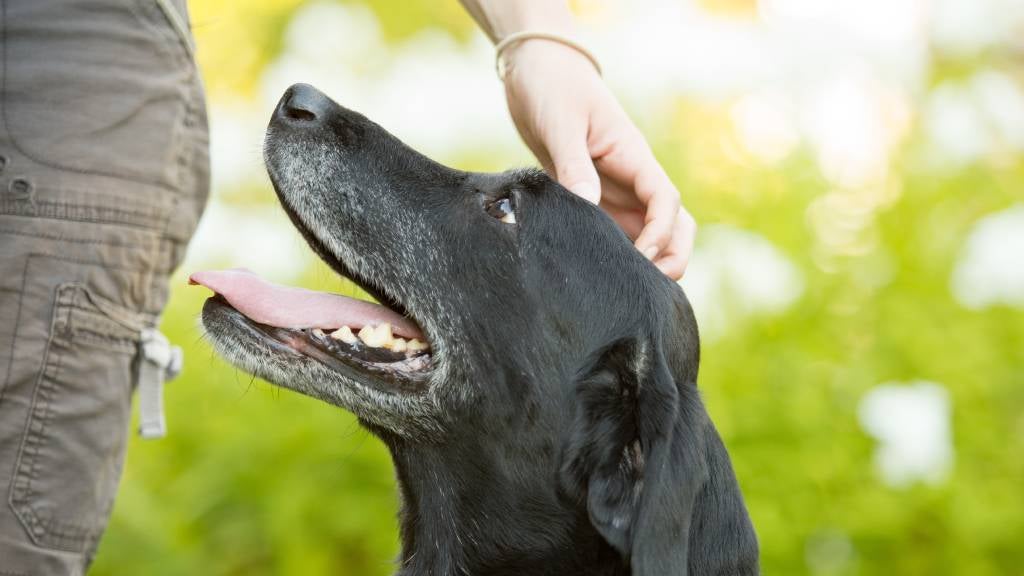Who is the bestest boy? Positive reinforcement training guide

Training your pet can be tricky business. But don’t despair – the key to success lies in positive reinforcement training! So, grab your treats, put on that “proud pet parent” face and get ready for some fun – it's time to learn how to train.
With the help of Dr Rosalind Holland (BVSc), we'll explore the ways positive reinforcement training can be used by owners to reward their pets for good behaviour and help curb unwanted behaviour. We’ll also look at some tips on how best to use positive reinforcement techniques so you can get the most out of your training sessions.
What is positive reinforcement?
As pet parents, positive reinforcement is likely a term you've heard thrown around from time to time. But what does it really mean?
In a nutshell, positive reinforcement is the practice of rewarding desirable behaviour to encourage your pet to repeat that behaviour in the future.
This reward system can take many forms, including treats, praise, toys – anything your dog finds rewarding! Not only is it more effective than an electronic collar, but it also helps build trust between you and your pet – something that's essential when teaching good behaviour.
Benefits of positive reinforcement training
Positive reinforcement training is a very humane, and effective way to train your pet because it reinforces the desired behaviour and encourages the animal to repeat that behaviour without using fear, pain, or intimidation.
This type of reward-based training has several benefits, including:
- Strengthening the bond between owner and pet
- Making training easier and faster – and fun, for both the pet and the owner!
- Encouraging the animal to become more relaxed, confident and independent
- Reducing fear and aggression in animals (by eliminating the use of punishment)
- Building positive behaviours in your pet
Here’s how you can get started
Dr Rosalind Holland (BVSc) says that “Positive reinforcement training can be as simple as rewarding your pet when they naturally perform the behaviours.”
For example, if you stand in front of your pooch and they sit. You can capture this behaviour by rewarding it. From here, you can begin shaping the behaviour by adding a verbal cue, like "sit!"
You can also help your dog by using a clicker to mark the exact moment your dog performs the behaviour you are trying to reward. This can be useful for making it easier for your dog to learn more complex behaviours by rewarding small steps towards the desired behaviour, a process known as ‘shaping’.
Without waiting for your pet to naturally perform a behaviour, especially if it's more complicated (like rollover), you can use other positive reinforcement techniques. another technique called luring. This works well For food-motivated critters, who will follow a treat anywhere you hold it, this is a great way to begin teaching basic cues, and can be used to help shape more difficult behaviours.
Intermittent reinforcement
Dr Rosalind Holland (BVSc) strongly recommends continuously rewarding new behaviour. This will help your pet understand that the behaviour is expected and something they should continue to do.
However, over time your pet may start to expect a reward from you each and every time they perform the behaviour. Or as Dr Rosalind Holland (BVSc) calls it “an on-demand treat dispenser”.
To avoid this, switch to intermittent reinforcement once your dog has learned the behaviour – reward your pet randomly or after longer intervals. For example, if you have taught your pet to sit, try rewarding them only some of the time. This will help keep their response sharper and encourage the desired behaviour more often.
5 top tips from our Vet
When using positive reinforcement techniques, consistency is key! Here are a few tips from Dr Rosalind Holland (BVSc) on how to use positive reinforcement to reward your pet for good behaviour:
- Give rewards immediately after the desired behaviour has been performed. This helps reinforce the behaviour and encourages it to be repeated in the future.
- Be consistent with rewards, as this will help ensure that your pet understands what is expected of them.
- Make sure your rewards are appropriate. If you’re using treats, make sure they’re small and healthy. You can also use verbal praise as a reward, such as telling your pet “good boy/girl!”
- Set realistic goals for each training session and keep sessions short and fun to avoid tiring out or boring your pet.
- Finally, make sure you’re monitoring your pet’s behaviour and rewarding them even for small successes. This will help ensure their good behaviour is reinforced.
Protect yourself and your best fur-friend
By following these tips, you can improve the likelihood that positive reinforcement training is effective and beneficial for both you and your pet! With the right approach and lots of patience, you’ll be able to teach your pet the behaviours you desire.
Pet insurance can help to provide peace of mind for unexpected eligible vet bills. If you're looking for a way to protect your pet for eligible accidental injury and illness, consider SPCA Pet Insurance.
13 Apr 2023